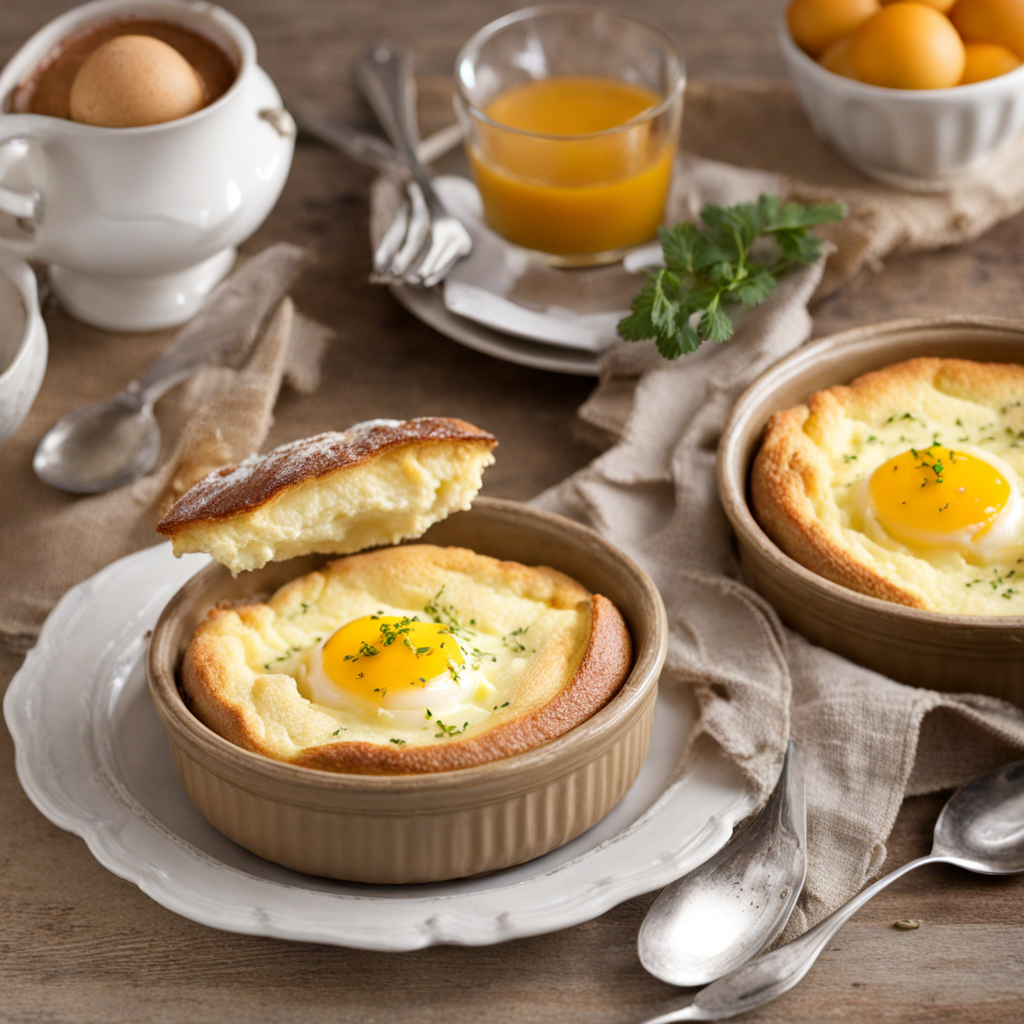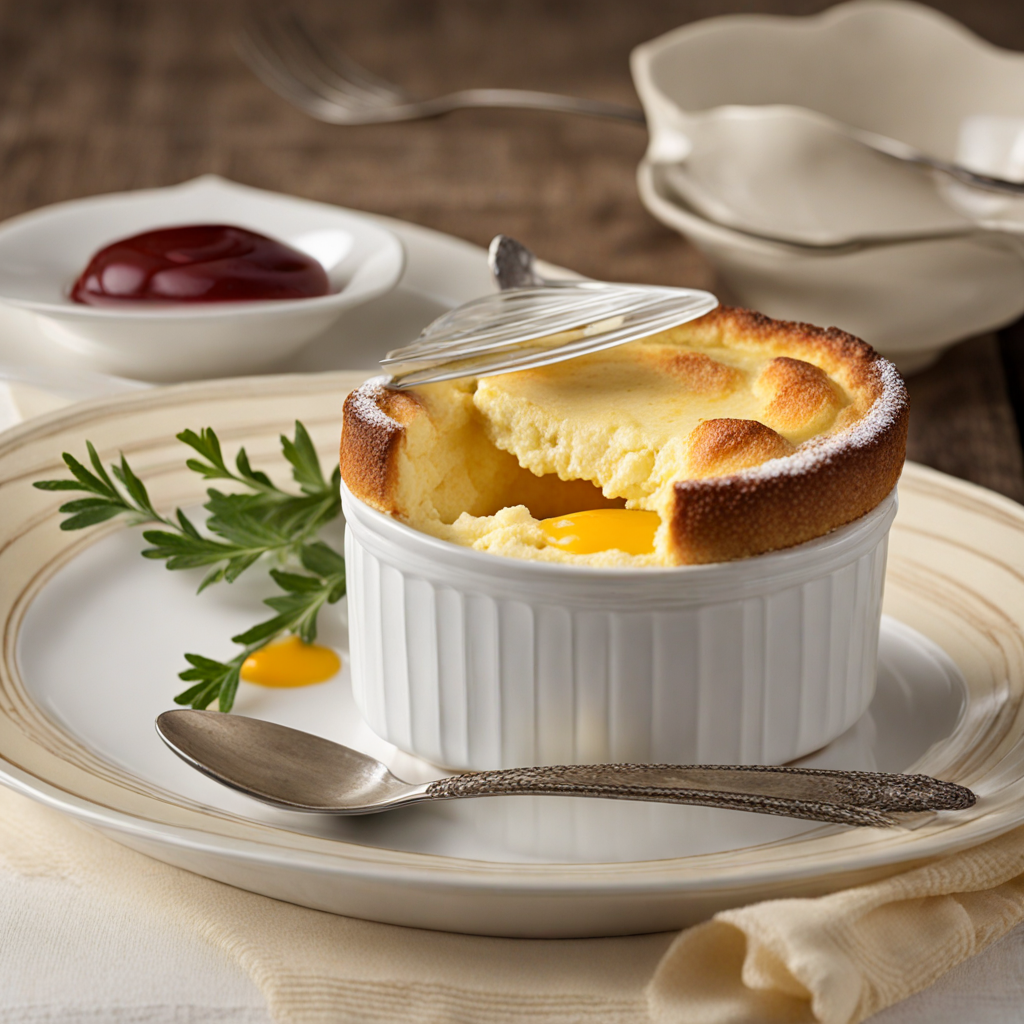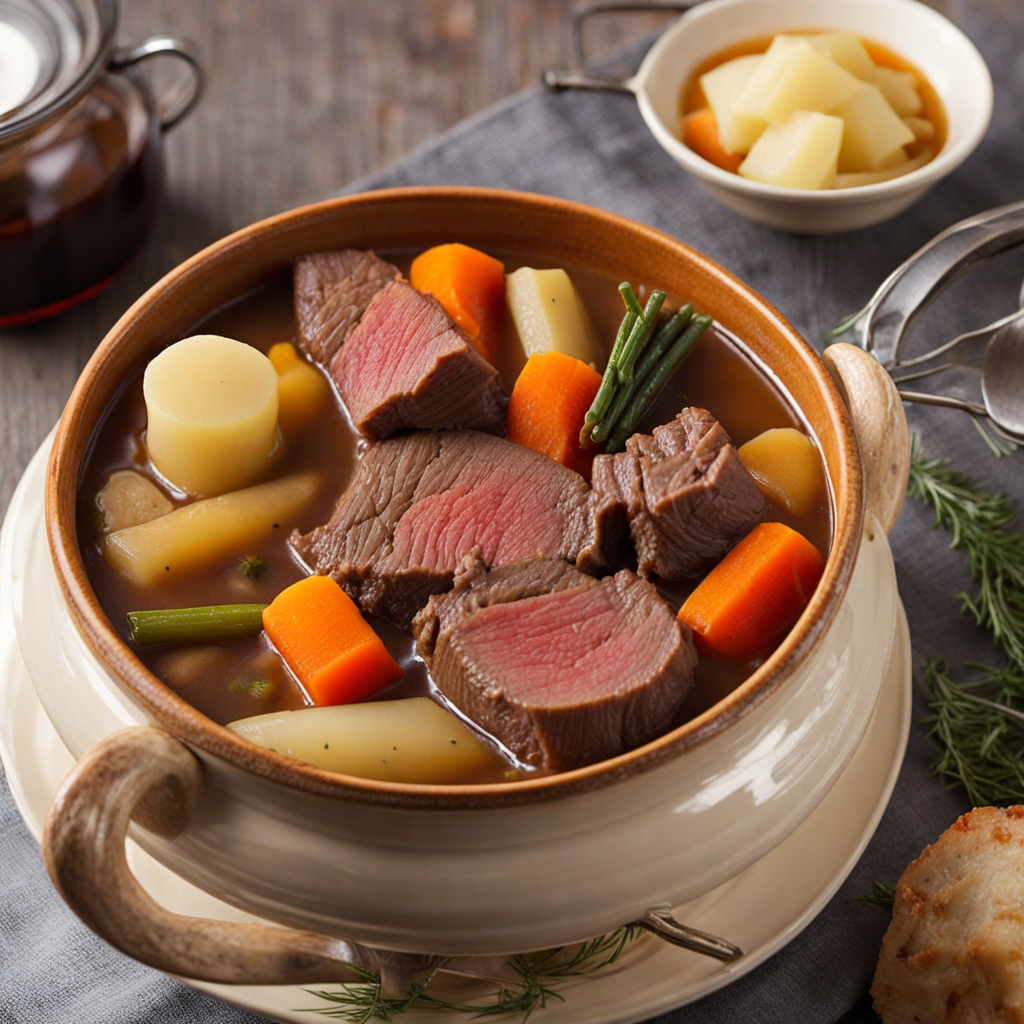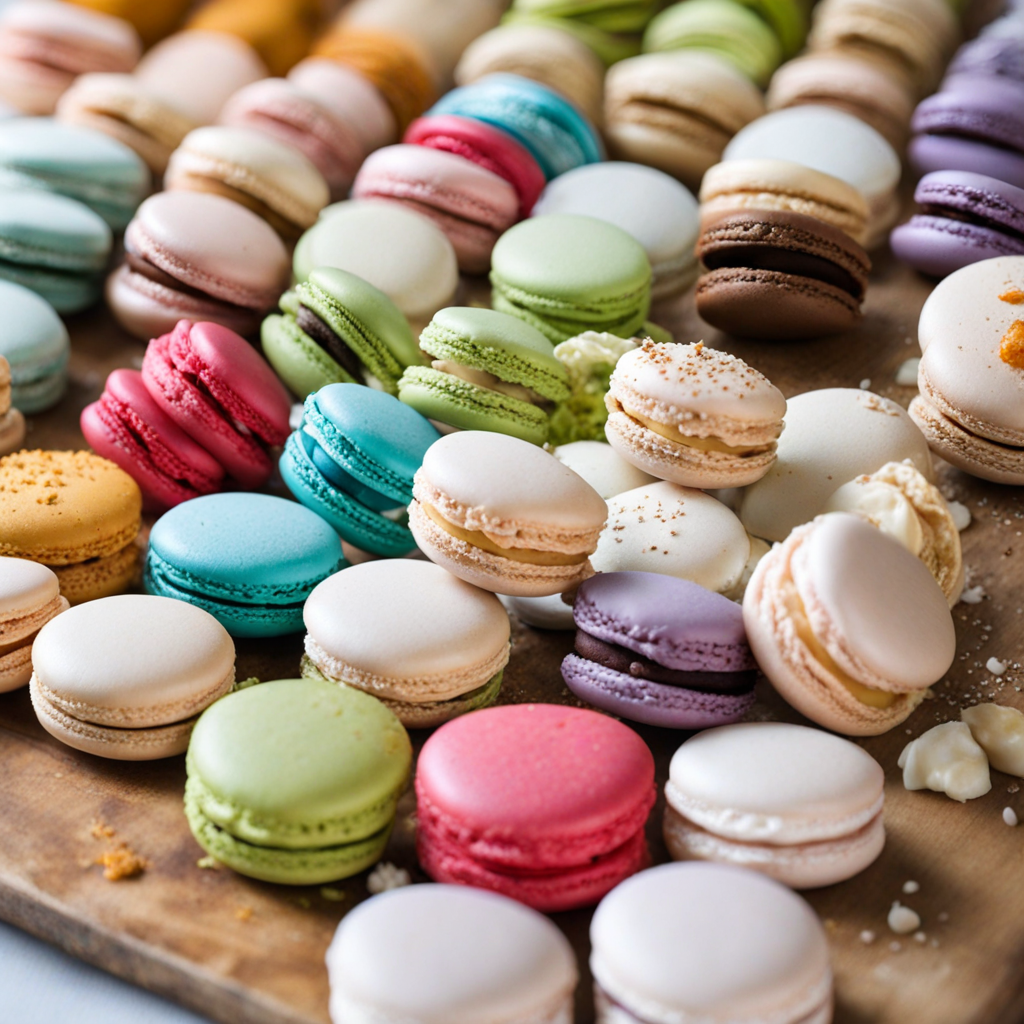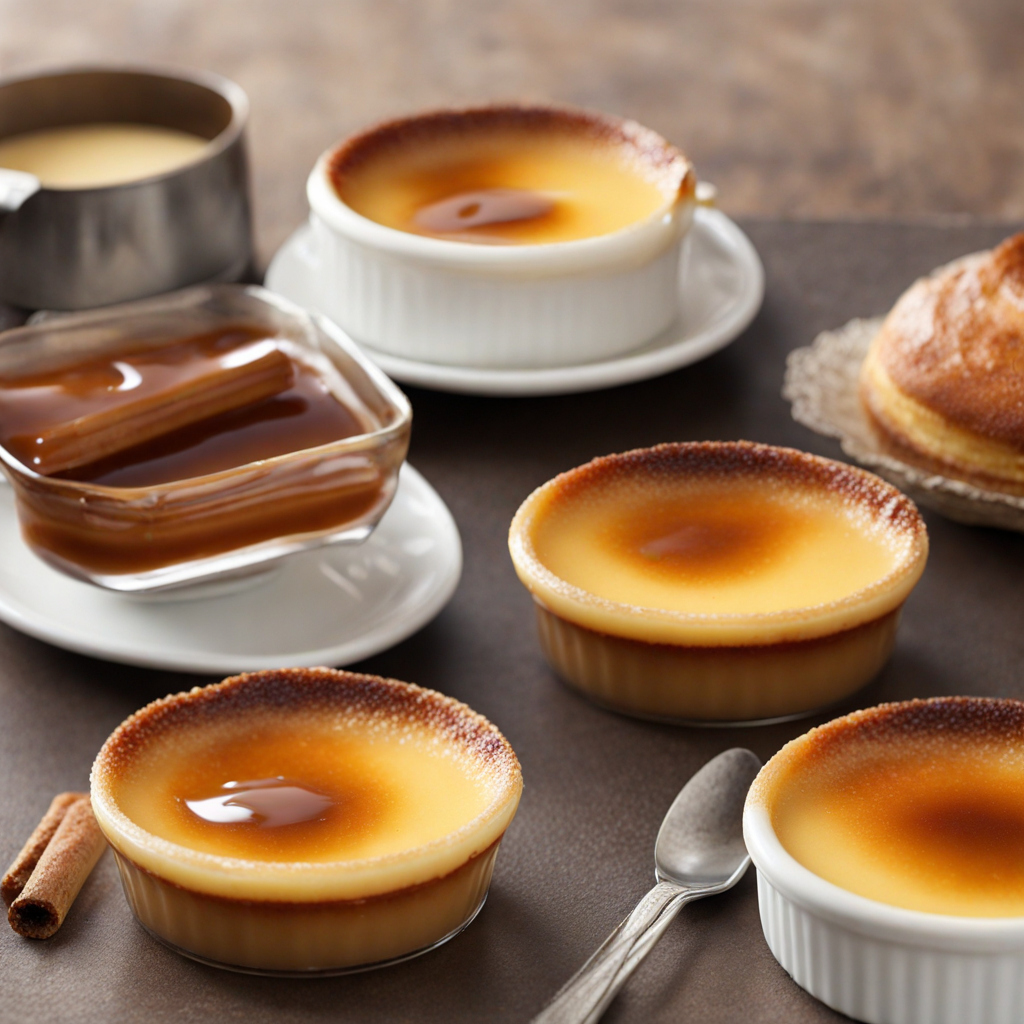Soufflé
Soufflé is a classic French dish that embodies elegance and culinary sophistication. This airy delight is made from a flavorful base, typically a creamy sauce or purée, combined with beaten egg whites which give it its characteristic light and fluffy texture. The base can vary widely, ranging from cheese to chocolate, allowing for both savory and sweet varieties. As it bakes, the soufflé rises dramatically, creating a golden-brown crust that contrasts beautifully with its soft, cloud-like interior. The experience of breaking into a soufflé is a delight in itself, with the warm steam that escapes and the rich aroma that fills the air, enticing anyone nearby. The savory soufflé often features ingredients like cheese, herbs, or vegetables, making it a stunning centerpiece for any meal. Imagine a cheese soufflé, where the nutty notes of Gruyère cheese meld with the lightness of the egg whites, creating a dish that is both comforting and sophisticated. Each mouthful is a harmonious blend of flavors, often enhanced by a side salad or a light sauce that complements its richness. For those who lean towards the sweet side, chocolate soufflé offers an indulgent treat. The deep, rich chocolate flavor paired with a subtle sweetness creates a dessert experience that is both decadent and ethereal, melting in your mouth with every bite. What truly sets soufflé apart is its versatility and the skill required to achieve the perfect rise. It is a dish that invites experimentation, whether by adding unique flavors or presenting it in different forms. While it may seem daunting to master the soufflé technique due to its delicate nature, the reward of serving a perfectly risen dish is unparalleled. In France, soufflé is not just food; it is an experience that celebrates the artistry of cooking, embodying the spirit of French cuisine with every luscious bite.
How It Became This Dish
The Enigmatic Soufflé: A Culinary Journey Through Time The soufflé, a dish that has become synonymous with French gastronomy, is a testament to the art of cooking, embodying both elegance and complexity. This light and airy creation, which can be sweet or savory, has roots that intertwine with the cultural and culinary evolution of France. To understand the soufflé is to embark on a journey through history, exploring its origins, significance, and transformation over the centuries. #### Origins: The Birth of a Culinary Classic The earliest mentions of soufflés date back to the 18th century, although the concept of baking dishes made from eggs can be traced to ancient civilizations. In ancient Rome, for instance, a dish known as "ovum," made from eggs and various fillings, was popular. However, it wasn't until the 1700s in France that the soufflé began to take on its modern form. The name "soufflé" comes from the French verb "souffler," which means "to puff" or "to blow." This aptly describes the dish's key characteristic: its light, airy texture, achieved by incorporating beaten egg whites. The soufflé was popularized by the renowned French chef Vincent de la Chapelle, who is credited with creating early versions of this dish. In his writings, he described recipes that included whipped egg whites combined with a base of béchamel or pastry cream. The soufflé truly blossomed in the culinary world through the efforts of Marie-Antoine Carême, a chef who is often regarded as the father of haute cuisine. In the early 19th century, Carême refined the soufflé, introducing the idea of serving it as a main course or dessert. His elaborate presentations and meticulous attention to detail laid the groundwork for future chefs and established the soufflé as a staple of French fine dining. #### Cultural Significance: A Symbol of French Gastronomy The soufflé's evolution into a symbol of French culinary prowess is intrinsically linked to the broader context of French culture and society. By the 19th century, France was experiencing a culinary renaissance, with the emergence of gastronomic literature, fine dining establishments, and a growing appreciation for culinary artistry. The soufflé, with its delicate texture and sophisticated presentation, came to embody the ideals of French cuisine: balance, refinement, and innovation. It was not merely a dish but a representation of the chef's skill and creativity. This cultural significance was further enhanced by the rise of culinary schools, such as Le Cordon Bleu, which trained aspiring chefs in the art of French cooking, including the mastery of soufflés. In the world of literature and art, the soufflé found its place as well. Renowned authors and artists often referenced the soufflé in their works, illustrating its status as a cultural icon. The dish became a subject of admiration, symbolizing the elegance and sophistication associated with French dining. #### Development: Variations and Modern Interpretations As the soufflé gained popularity, its recipes and preparation methods began to evolve. Chefs explored various flavor profiles, utilizing seasonal ingredients and regional specialties. Sweet soufflés, such as chocolate and vanilla, became popular desserts, while savory varieties incorporated cheese, vegetables, and meats. In the late 19th and early 20th centuries, the soufflé underwent further transformation, influenced by the culinary movements of the time. The advent of nouvelle cuisine in the 1960s, characterized by lighter dishes and innovative techniques, brought about a resurgence of interest in the soufflé. Chefs like Alain Senderens and Michel Guérard reimagined the dish, focusing on freshness, simplicity, and presentation. The soufflé also found its way into popular culture, appearing in cookbooks and television shows, making it accessible to home cooks. Julia Child, the iconic American chef, played a significant role in demystifying the soufflé, introducing it to a wider audience through her television series and cookbooks. Her approachable style and emphasis on technique made the soufflé a beloved dish in American homes, bridging the gap between French culinary art and everyday cooking. #### Contemporary Soufflés: An Evolving Landscape Today, the soufflé continues to evolve, reflecting contemporary culinary trends and preferences. Chefs experiment with unconventional ingredients, incorporating flavors from global cuisines and adapting traditional recipes to suit modern tastes. For example, matcha green tea, citrus zests, and exotic spices have found their way into sweet soufflés, while savory versions may feature global flavors such as curry or truffle oil. The soufflé's versatility remains one of its most appealing aspects. It can be served in various settings, from upscale restaurants to casual bistros, and can be adapted for different occasions, whether a formal dinner or a cozy gathering among friends. The dish's inherent elegance makes it a favorite for celebrations, where the dramatic puffing of the soufflé provides a sense of theatricality that captivates diners. Despite its evolution, the soufflé remains a dish that demands skill and precision. The delicate balance of ingredients and the technique of folding in whipped egg whites require practice and attention to detail. For many chefs, mastering the soufflé is a rite of passage, a benchmark of their culinary expertise. #### Conclusion: The Enduring Allure of the Soufflé The soufflé, with its rich history and cultural significance, stands as a testament to the artistry of French cuisine. From its humble beginnings in the 18th century to its status as a culinary icon, the soufflé has captured the hearts and palates of food lovers around the world. As it continues to evolve, the soufflé remains a symbol of innovation and creativity, embodying the spirit of French gastronomy while inviting chefs and home cooks alike to explore its endless possibilities. In a world where culinary trends come and go, the soufflé endures—timeless, elegant, and ever-inspiring. Whether enjoyed in a Michelin-starred restaurant or made at home, it serves as a reminder of the joy of cooking, the beauty of sharing food, and the artistry that lies behind every puffed-up masterpiece.
You may like
Discover local flavors from France


